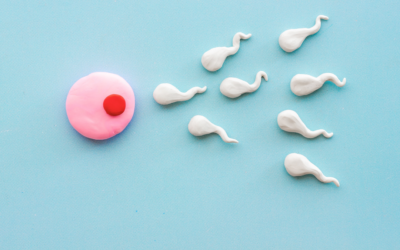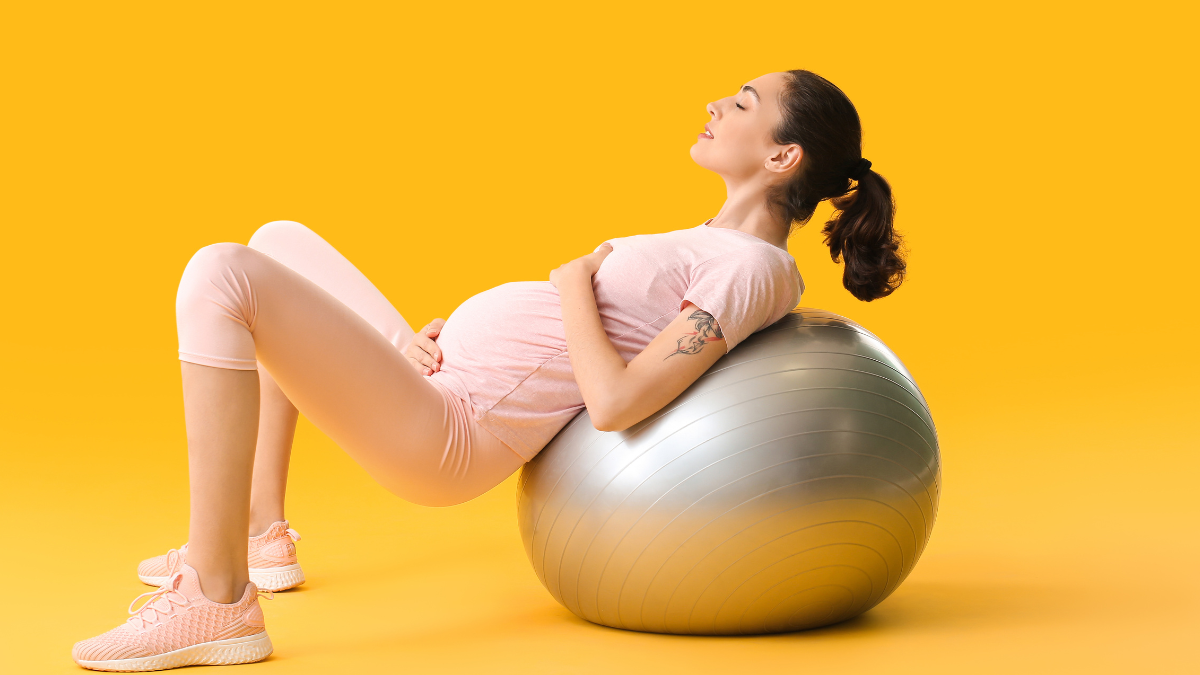Reaching 10 weeks pregnant is a big deal—you’re almost at the end of your first trimester! By now, your little one has grown from a tiny bundle of cells into a developing fetus with forming organs, tiny fingers, and even the beginnings of facial features.
At 10 weeks pregnant, your body is also working overtime. Hormones are still high, symptoms may be lingering, and emotions can be all over the place. But you’re getting closer to that magical second trimester, where many moms start to feel more energetic and comfortable.
This guide will walk you through everything you need to know at 10 weeks pregnant—how your baby is developing, what’s happening in your body, symptoms to watch for, and tips for feeling your best.
Table of Contents
How Many Months is 10 Weeks Pregnant?
Pregnancy is usually tracked in weeks because it’s more accurate, but many people find it easier to think in months. At 10 weeks pregnant, you’re about two and a half months along. That means you’re nearly a quarter of the way through your pregnancy!
Here’s why this stage matters:
- You’re getting close to the end of the first trimester.
- The risk of miscarriage decreases after week 12.
- Your baby’s most critical development phase is well underway.
This is also when many moms start sharing their pregnancy news more openly. While some prefer to wait until the 12-week mark, reaching 10 weeks pregnant often brings a sense of reassurance and excitement about the months ahead.

Your Baby’s Development at 10 Weeks Pregnant
At 10 weeks pregnant, your baby is about the size of a strawberry—around 1.2 inches long and weighing about 0.14 ounces. This is an exciting stage because the transition from embryo to fetus is complete.
What’s happening this week:
- Heartbeat: Strong and steady, pumping blood throughout the tiny body.
- Facial features: Eyes, ears, and nose are more defined.
- Limbs: Fingers and toes are separating and becoming distinct.
- Bones: Starting to harden and replace cartilage.
- Movement: Your baby can bend elbows and knees, though you won’t feel it yet.
This rapid development is setting the stage for the growth spurts to come. Even though your baby is still tiny, the groundwork for all major systems and organs is already in place.
Common Symptoms at 10 Weeks Pregnant
Your body is adapting to support your growing baby, and at 10 weeks pregnant, symptoms can still be strong. You might notice:
- Morning sickness or nausea (still common)
- Fatigue due to hormonal changes
- Frequent urination as your uterus grows
- Mood swings caused by fluctuating hormones
- Breast tenderness and swelling
- Bloating or indigestion from slower digestion
These symptoms can be challenging, but they’re a sign that your body is working hard to nurture your little one. Many moms find relief from nausea by eating small, frequent meals and staying hydrated.
Your Body at 10 Weeks Pregnant
At 10 weeks pregnant, your body is working hard to support your baby’s rapid development. While you might not be showing much yet, a lot is happening inside. Here’s what you may experience around this stage:
- Growing Uterus: Your uterus has expanded to about the size of a grapefruit, making more room for your developing baby.
- Increased Blood Volume: Your body is producing more blood to carry oxygen and nutrients to your baby, which can sometimes cause visible veins on your skin.
- Hormonal Changes: Higher levels of progesterone and estrogen can lead to mood swings, fatigue, and breast tenderness.
- Morning Sickness: Nausea and food aversions remain common for many women at this stage, although some may start to feel relief in the coming weeks.
- Bloating and Digestive Changes: Hormones slow down digestion, which may cause bloating or constipation.
Remember, every pregnancy is unique—some women feel great at 10 weeks, while others may still be adjusting to early symptoms. Listening to your body, staying hydrated, and eating nutrient-rich foods can help you feel your best.

Your Baby at 10 Weeks Pregnant
At 10 weeks pregnant, your little one is growing quickly and starting to look more like a tiny human than an embryo. Here’s what’s happening with your baby at this stage:
- Size and Weight: Your baby is about the size of a strawberry—around 1.2 inches long and weighing about 4 grams.
- Developing Features: Tiny facial details like eyes, ears, nose, and mouth are forming more clearly. Eyelids are starting to close and will remain shut until around week 27.
- Limbs and Fingers: Arms and legs are longer now, with tiny elbows and knees becoming more noticeable. Fingers and toes are separating, losing their early webbed look.
- Vital Organs: The liver, kidneys, brain, and intestines are functioning, and the heart is beating strongly at about 170 beats per minute.
- Movements Begin: Your baby can bend arms and legs and make tiny movements, though you won’t feel them yet.
This week marks the end of the embryonic stage—your baby is officially called a fetus now. From here, growth will speed up, and more exciting milestones are just around the corner.
Emotional Changes at 10 Weeks Pregnant
At 10 weeks pregnant, your emotions may feel like they’re on a roller coaster—and that’s completely normal. The combination of hormonal changes, physical symptoms, and the reality of pregnancy settling in can influence how you feel from moment to moment. Here’s what you might notice:
- Mood Swings: Rising hormone levels, especially estrogen and progesterone, can affect the brain chemicals that regulate mood. You may feel happy one minute and tearful the next.
- Heightened Anxiety: Concerns about your baby’s health, your body’s changes, or upcoming life adjustments may feel more intense during this stage.
- Increased Sensitivity: You might find yourself more easily affected by comments, situations, or even sad movies.
- Excitement and Anticipation: As your pregnancy becomes more real, you may feel bursts of joy and excitement about meeting your baby.
- Feeling Overwhelmed: Managing early symptoms like nausea, fatigue, or food aversions can sometimes leave you feeling emotionally drained.
Coping Tips:
- Talk openly with your partner, friends, or a support group about your feelings.
- Try gentle activities like walking, journaling, or prenatal yoga to manage stress.
- Remember that emotional ups and downs are part of the journey—be kind to yourself.
If mood changes feel persistent or overwhelming, it’s important to speak with your healthcare provider. They can offer guidance and support to help you feel more balanced.
Nutrition at 10 Weeks Pregnant
At 10 weeks pregnant, your baby’s major organs are developing rapidly, and the right nutrition can support both your health and your baby’s growth. Even if morning sickness makes eating challenging, focusing on nutrient-rich foods is essential.
Key Nutrients to Focus On:
- Folic Acid: Crucial for brain and spinal cord development; continue taking your prenatal vitamin.
- Protein: Supports your baby’s tissues, muscles, and overall growth. Good sources include eggs, lean meats, dairy, beans, and lentils.
- Iron: Helps produce extra blood for you and your baby, reducing the risk of anemia. Pair iron-rich foods like spinach, red meat, or fortified cereals with vitamin C-rich fruits to boost absorption.
- Calcium: Builds strong bones and teeth for your baby; include dairy, fortified plant milks, or leafy greens.
- Omega-3 Fatty Acids: Important for brain and eye development. Found in fatty fish like salmon (limit to safe, low-mercury options), chia seeds, and walnuts.
Eating Tips for This Stage:
- Eat small, frequent meals to help with nausea and maintain energy levels.
- Stay hydrated—aim for 8–10 glasses of water a day.
- Limit processed foods high in sugar, unhealthy fats, and artificial additives.
- Avoid high-mercury fish, unpasteurized dairy, and undercooked meats to prevent foodborne illnesses.
Even small, healthy changes can make a big difference for you and your baby’s well-being during this stage of pregnancy.

Tips for Staying Comfortable at 10 Weeks Pregnant
At 10 weeks pregnant, your body is adjusting to major hormonal and physical changes, which can sometimes leave you feeling tired, bloated, or nauseous. A few small adjustments to your daily routine can help you feel more at ease.
1. Manage Morning Sickness
- Keep plain crackers or dry toast by your bedside to eat before getting up.
- Eat small, frequent meals instead of large portions.
- Sip ginger tea or suck on lemon slices to ease nausea.
2. Support Your Energy Levels
- Prioritize rest and aim for 7–9 hours of sleep each night.
- Take short naps during the day if possible.
- Include iron-rich foods and stay hydrated to fight fatigue.
3. Reduce Bloating and Constipation
- Eat fiber-rich foods like whole grains, fruits, and vegetables.
- Drink plenty of water throughout the day.
- Take gentle walks to help stimulate digestion.
4. Relieve Breast Tenderness
- Wear a soft, supportive bra without underwires.
- Choose breathable fabrics like cotton to prevent irritation.
5. Care for Your Emotional Well-being
- Practice relaxation techniques like prenatal yoga or deep breathing.
- Talk to friends, family, or join a pregnancy support group.
A little self-care now can go a long way in helping you stay comfortable and positive during this exciting stage of pregnancy.
Exercise at 10 Weeks Pregnant
Staying active at 10 weeks pregnant can boost your energy, improve your mood, and help prepare your body for the months ahead. As long as your doctor has cleared you for physical activity, light to moderate exercise is generally safe and beneficial during this stage.
Benefits of Exercising During Pregnancy:
- Improves blood circulation and reduces swelling.
- Eases pregnancy discomforts like back pain and constipation.
- Helps maintain a healthy weight gain.
- Supports better sleep quality.
- Boosts mood and reduces stress.
Safe Exercise Options at 10 Weeks Pregnant:
- Walking: Low impact and easy to fit into your daily routine.
- Swimming or Water Aerobics: Gentle on joints and helps relieve pressure on your back.
- Prenatal Yoga: Improves flexibility, balance, and relaxation.
- Light Strength Training: Use light weights or resistance bands to maintain muscle tone.
- Stationary Cycling: Low risk of falls and good for cardiovascular health.
Tips for Exercising Safely:
- Warm up before and cool down after your workouts.
- Drink plenty of water before, during, and after exercise.
- Wear supportive shoes and comfortable clothing.
- Avoid activities with a high risk of falling or abdominal injury (like contact sports or high-intensity workouts).
- Listen to your body—stop if you feel dizzy, overly tired, or experience pain.
A consistent, gentle exercise routine can help you feel stronger, healthier, and more prepared for the physical demands of pregnancy and childbirth.
Things to Avoid at 10 Weeks Pregnant
At 10 weeks pregnant, your baby’s organs, brain, and body systems are developing rapidly. Certain habits, foods, and activities can pose risks to your health or your baby’s growth, so it’s important to know what to avoid during this stage.
1. Harmful Foods and Drinks
- High-mercury fish like shark, swordfish, king mackerel, and tilefish.
- Unpasteurized dairy products and soft cheeses such as brie, feta, and blue cheese (unless labeled pasteurized).
- Raw or undercooked meats, poultry, and eggs to avoid harmful bacteria.
- Deli meats and hot dogs unless thoroughly heated to steaming.
- Excess caffeine—limit to about 200 mg per day (around 1 regular cup of coffee).
- Alcohol—no safe level has been proven, so it’s best to avoid it completely.
2. Hazardous Activities
- High-impact sports or activities with a risk of falling (skiing, horseback riding, gymnastics).
- Hot tubs, saunas, or very hot baths can raise your core temperature too much.
- Heavy lifting or straining that could cause injury.
3. Harmful Substances
- Smoking, vaping, and secondhand smoke exposure.
- Recreational drugs or non-prescribed medications.
- Strong chemicals and toxic cleaning products—opt for natural or pregnancy-safe options.
4. Overexertion and Stress
- Avoid overworking yourself physically or mentally; rest is essential for a healthy pregnancy.
- Reduce stress through deep breathing, light exercise, or mindfulness practices.
Being mindful of these precautions will help create a safe environment for your baby’s growth and give you peace of mind throughout your pregnancy journey.
10 Weeks Pregnant Checklist
At 10 weeks pregnant, you’re nearing the end of your first trimester. Staying organized can help you manage symptoms, prepare for upcoming milestones, and support your baby’s healthy development. Here’s a handy checklist for this stage:
✅ Health and Medical
- Schedule or attend your first prenatal checkup if you haven’t already.
- Discuss any symptoms like severe nausea, bleeding, or cramping with your doctor.
- Continue taking prenatal vitamins with folic acid, iron, and DHA.
- Keep track of your weight gain and overall health.
✅ Nutrition and Hydration
- Eat small, balanced meals rich in protein, fiber, and healthy fats.
- Drink at least 8–10 glasses of water daily.
- Avoid unsafe foods like high-mercury fish, raw meats, and unpasteurized dairy.
- Limit caffeine and skip alcohol completely.
✅ Lifestyle and Habits
- Incorporate light exercise, such as walking or prenatal yoga.
- Wear comfortable clothing and supportive bras.
- Get plenty of rest—your body is working hard.
- Avoid exposure to harmful chemicals and secondhand smoke.
✅ Emotional and Mental Well-being
- Talk about your feelings with your partner or friends.
- Try relaxation techniques to manage stress.
- Start thinking about how you’ll share your pregnancy news if you haven’t yet.
✅ Planning Ahead
- Begin reading about second-trimester changes so you know what’s coming next.
- Keep a pregnancy journal to track milestones and memories.
- Research prenatal classes in your area or online.
Following this checklist will help you feel more prepared, supported, and confident as you move forward in your pregnancy journey.
Preparing for the Second Trimester
As you approach the end of your first trimester, the second trimester (weeks 13 to 27) will bring new changes and, for many women, a boost in energy. Preparing now can make the transition smoother and help you feel more confident about what’s ahead.
1. Know What to Expect
- Many early symptoms like nausea and fatigue may ease.
- Your baby bump will become more noticeable.
- You may feel your baby’s first movements (often between weeks 16–22).
2. Adjust Your Nutrition
- Continue eating a balanced diet with protein, whole grains, fruits, and vegetables.
- Increase your calcium and iron intake to support bone and blood development.
- Keep taking your prenatal vitamins.
3. Update Your Wardrobe
- Invest in a few comfortable maternity clothes or stretchy leggings.
- Choose supportive shoes as your center of gravity shifts.
4. Plan Your Medical Care
- Schedule your second-trimester prenatal visits in advance.
- Ask your doctor about upcoming screenings like the anatomy scan (around 20 weeks).
5. Focus on Physical Activity
- Continue safe exercises like walking, swimming, or prenatal yoga.
- Add gentle stretches to ease back pain and improve flexibility.
6. Support Your Emotional Well-being
- Take time for self-care—read, rest, or enjoy hobbies you love.
- Share your pregnancy journey with friends or a support group.
7. Start Thinking Ahead
- Research baby essentials and begin making a registry list.
- Look into childbirth classes and book your spot early.
By taking small, intentional steps now, you can enter your second trimester feeling prepared, energized, and ready to enjoy this exciting stage of pregnancy.
Conclusion
At 10 weeks pregnant, you’re moving toward the end of your first trimester—a time of rapid growth for your baby and big changes for your body. You may still be managing early pregnancy symptoms like nausea, fatigue, and mood swings, but every day brings you closer to a more energetic second trimester.
By focusing on balanced nutrition, gentle exercise, and regular prenatal care, you’re giving your baby the best start. Remember to avoid foods and activities that can be harmful, take time for rest and self-care, and lean on your support system when you need it.
Pregnancy is a unique journey, and every step matters. Celebrate your progress so far, stay informed about the changes ahead, and trust your body’s incredible ability to nurture new life. The exciting weeks to come will bring new milestones, a growing bump, and more opportunities to connect with your baby.







